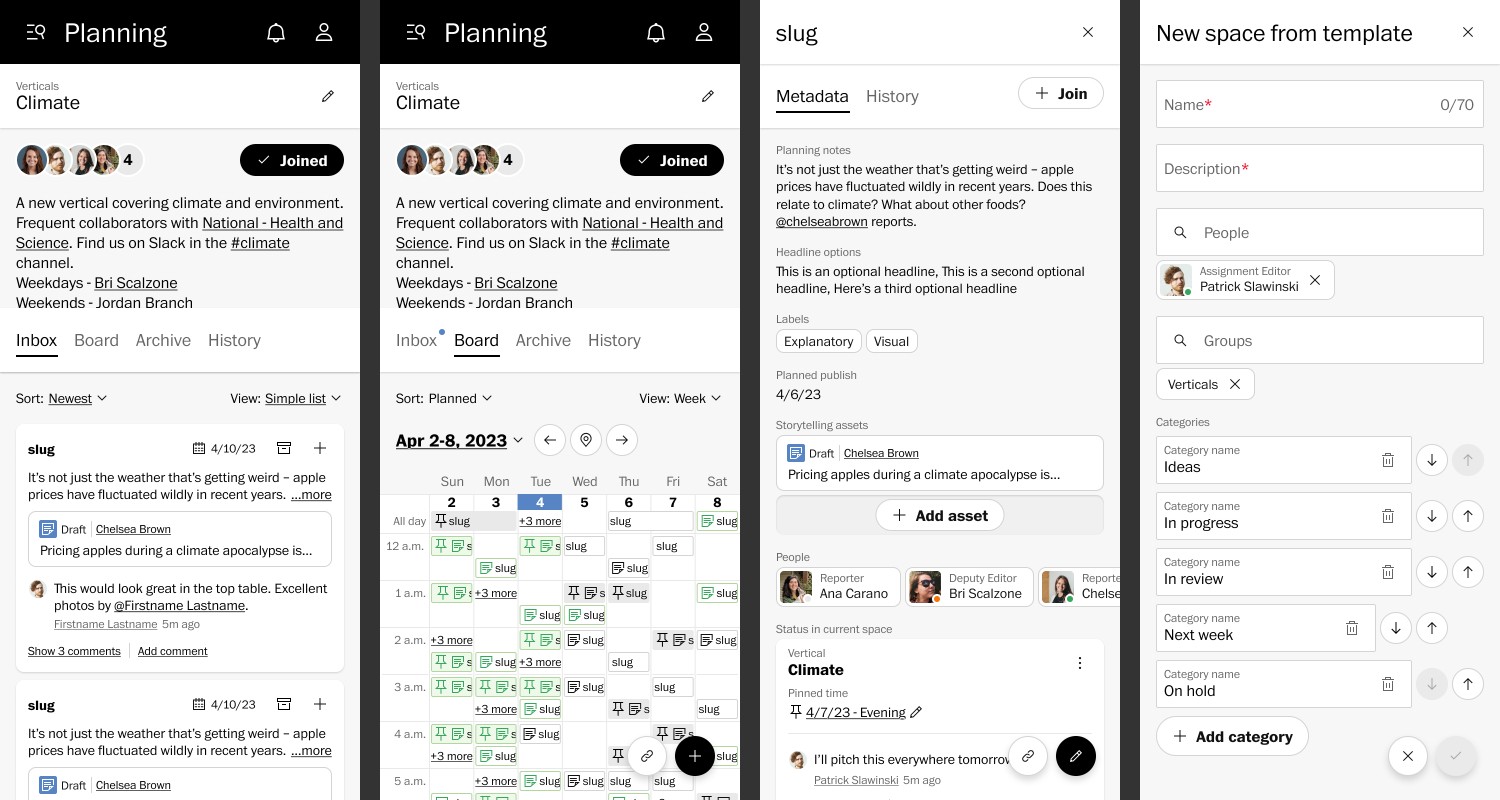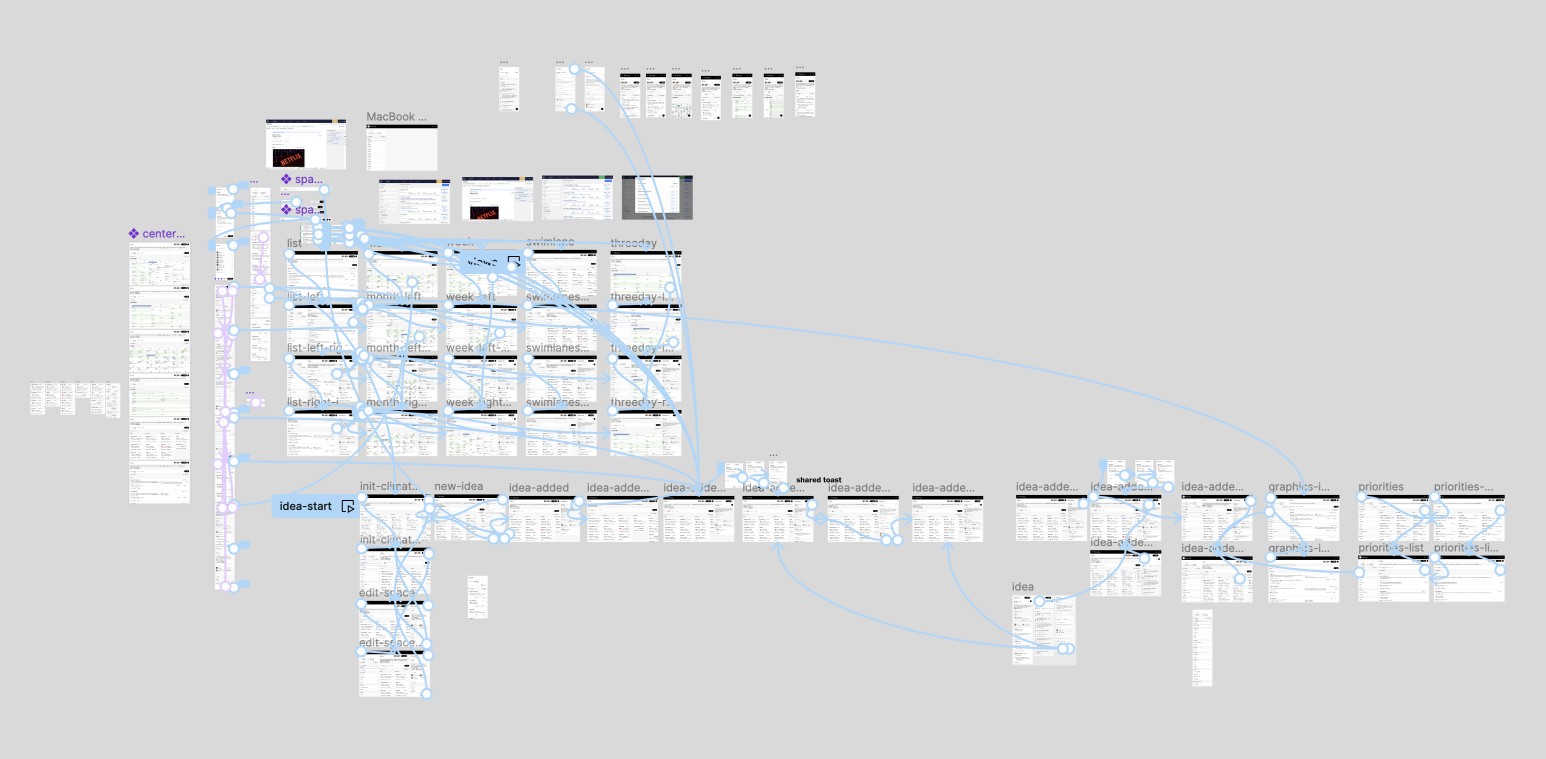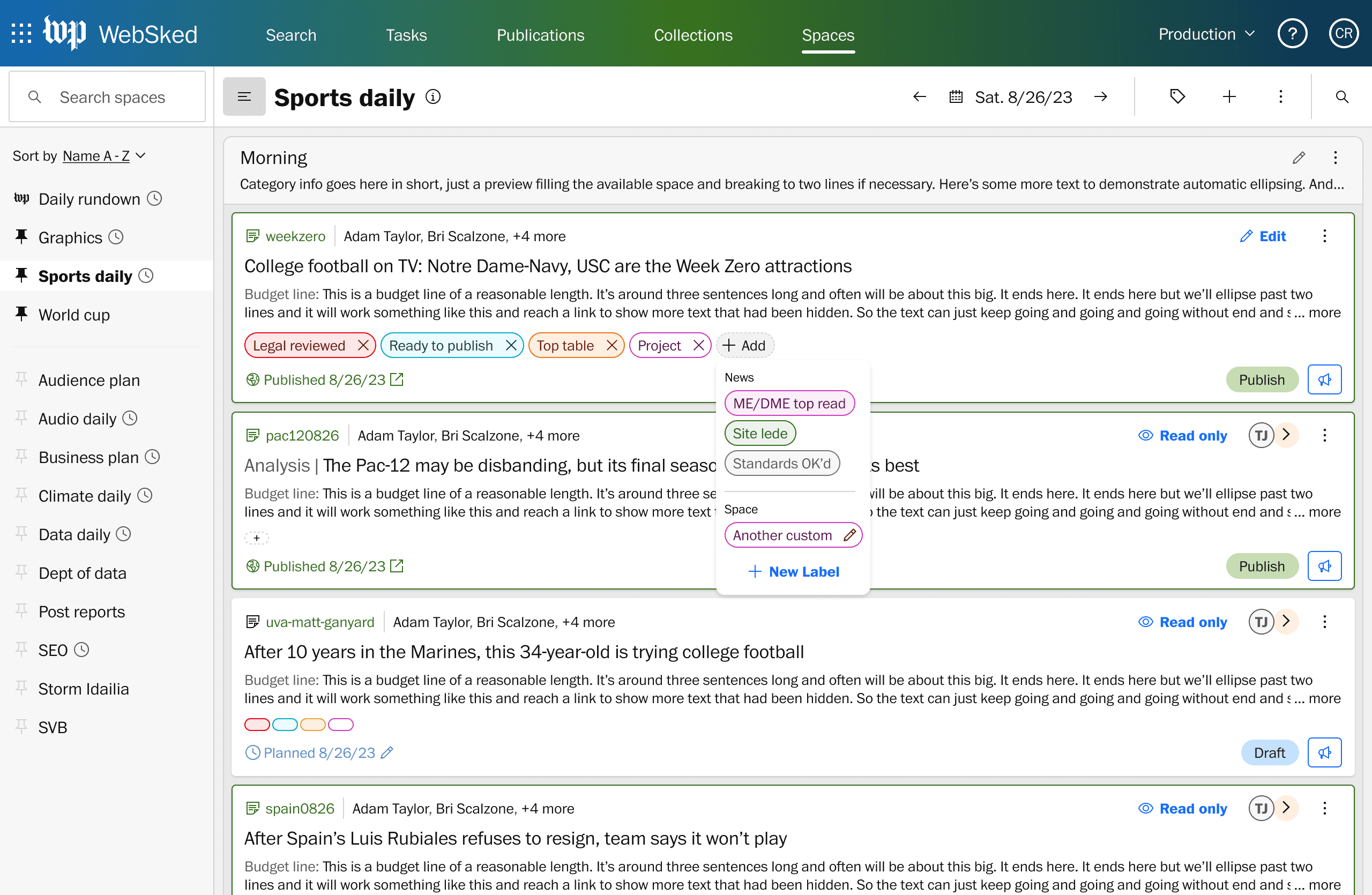Spaces
Transforming newsroom planning at
The Washington Post.
While getting started as a publishing tools designer at The Washington Post, I interviewed key stakeholders across the company. I knew I'd be focusing on newsroom planning, a thorny problem space I'd previously tackled with success at Gannett. It didn't take long for me to identify a set of common problems with planning and coordination.
The newsroom used far too many isolated tools for planning across teams and projects. Opportunities for collaboration and promotion were frequently missed due to a lack of transparency. There was no shared source of truth within the newsroom. Redundant status communications constantly damaged efficiency.
To address these problems and more, I laid out a comprehensive vision for a new product that I would design called Spaces. This new planning tool would permanently transform the Post's newsroom operations for the better.
The three pillars at the foundation of my vision were Ideas, Spaces, and People. Each pillar would be both an organizing concept and a modular component around which to build the Post's new planning tool.
Spaces is truly what those in the news media business call a “universal budget,” and also so much more. It's a shared calendar for the whole organization, a freeform planning space for every new initiative, and a daily source of truth for each team and project.
The design-led product development of Spaces had no precedent at The Washington Post. I earned stakeholder buy-in across the organization and led the product's direction from its inception to its successful release.
Spaces became the Post’s much-needed central planning hub within months of release, and it was my vision from the start. Adoption surpassed targets even faster than expected, with every goal met within months. Over 200 Spaces have been created by the newsroom, and every editor uses Spaces on a daily basis.
I continue to guide Spaces feature development with a healthy backlog of concepts that fit seamlessly together and a readiness to pivot to meet evolving user needs. Ongoing newsroom transformation efforts put Spaces at the heart of newsroom operations.
Spaces is just getting started as a living product, illuminating a brighter future for newsroom planning at The Washington Post.





